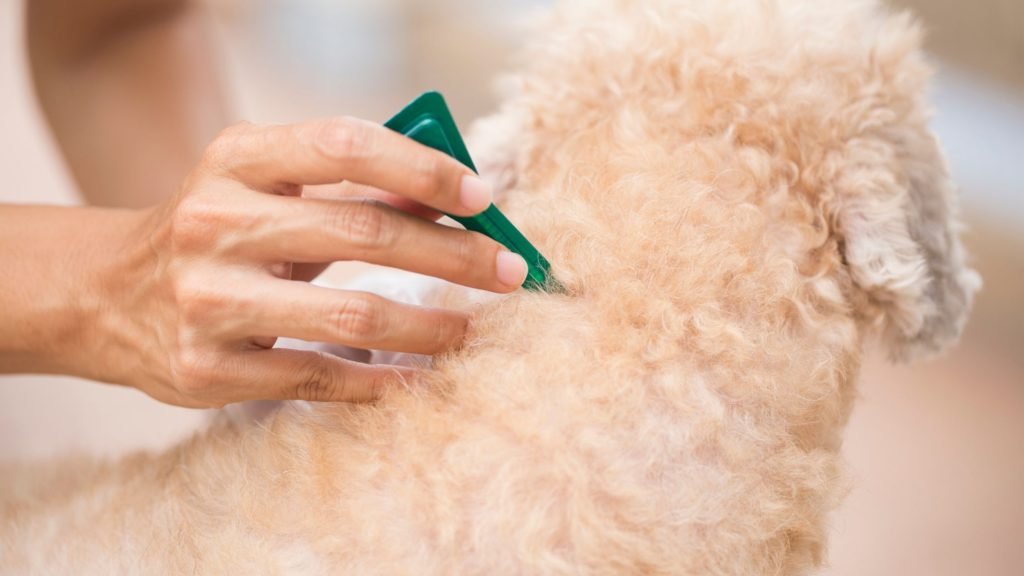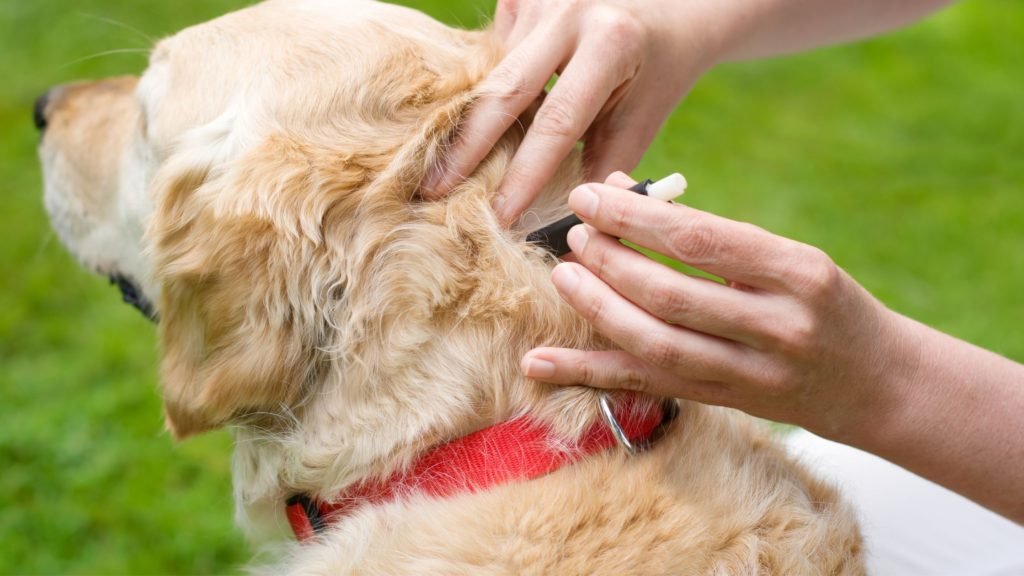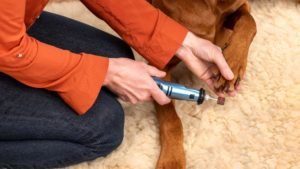We love our dogs – they’re not just pets but family members. The thought of them suffering from a tick bite is distressing. It’s important to know that while tick bites can be dangerous, understanding what to do after removing a tick from a dog can make a world of difference. Knowing exactly what to do after removing a tick from a dog is essential for your furry friend’s well-being.
Today, we’ll explore tick removal in dogs and the necessary steps after tick removal, providing clear guidelines and detailed aftercare instructions.
The Importance of Proper Tick Removal in Dogs
Ticks are not just pesky little creatures that annoy your dog; they can also carry dangerous diseases that can seriously harm your furry friend. That’s why removing ticks immediately and safely when you notice them is critical. But knowing what to do after removing the tick from your dog is equally important. Proper tick bite aftercare prevents potential infections or diseases that ticks may transmit.
When removing a tick, removing it and not leaving any part of it, especially the mouthparts, embedded in your dog’s skin is essential. Leaving a tick’s mouthparts behind can lead to infections or cause the tick to regurgitate its stomach contents into your dog’s bloodstream, increasing the risk of disease transmission. Luckily, tools like tick hooks or tweezers can help you remove the tick safely and prevent any parts from getting left behind.
Steps After Tick Removal from Dogs
Once you’ve successfully removed the tick, you should:
- Disinfect the bite area: Cleaning the dog’s skin after tick removal is critical to prevent infection. Use a mild antiseptic to clean the area thoroughly.
- Dispose of the tick carefully: Never crush a tick with your fingers. Instead, please put it in a jar of alcohol to kill it, then wrap it in a tissue and dispose of it in the trash.
- Monitor your dog: Keep an eye on your dog after the tick bite. Check for signs of infection at the bite site, such as redness, swelling, or pus. Also, observe your dog’s behavior and health for any changes.
In the next part, we’ll delve into the symptoms and risks that can follow a tick bite and how to handle any potential complications.

Tick Bite Symptoms in Dogs
After removing a tick from your dog, observing your pet for any signs of tick-borne diseases is essential. Symptoms can appear anywhere from 7 to 21 days after the tick bite and can include the following:
- Lethargy or fatigue
- Loss of appetite
- Fever
- Swollen joints or lameness
- Unusual or sudden onset of cough
These symptoms can indicate tick-borne diseases such as Lyme, ehrlichiosis, or anaplasmosis. If you notice any of these signs in your dog, it’s crucial to consult with a vet as soon as possible. Early detection can lead to more effective treatment and a better prognosis.
Tick-Borne Diseases in Dogs
Ticks can transmit several diseases to dogs, each with its symptoms. Some common tick-borne conditions include Lyme disease, which can cause arthritis and severe damage to the dog’s heart, kidneys, and nervous system—Rocky Mountain Spotted Fever can lead to joint pain, fever, and other serious complications.
Understanding these diseases and their symptoms is part of knowing what to do after removing the tick from a dog, as early detection and treatment can significantly improve your dog’s chances of full recovery.
What Happens After a Tick Bites a Dog
Immediately after a tick bite, the area might become red and irritated. It is a normal response. However, if the tick carries a disease over time, symptoms may start to show. It is why monitoring your dog after removing the tick is essential. Look for changes in behavior or any signs of illness. If you’re unsure, always err on the side of caution and consult a vet.
In the next section, we’ll cover how to prevent ticks on dogs, what a tick bite looks like, and the necessary care after a tick bite.
How to Prevent Ticks on Dogs
Preventing ticks from attaching to your dog is the first defense against tick-borne diseases. Here are some strategies you can use:
- Use tick preventatives: Many products are available that repel and kill ticks, including spot-on treatments, tick collars, and oral medications. Consult with your vet to determine the best option for your dog.
- Regularly check your dog for ticks: After walks or time spent outdoors, especially in wooded or grassy areas, thoroughly check your dog for ticks. Remember, they can be as small as a poppy seed!
- Keep your environment tick-free: Maintain your yard by cutting the grass short and removing leaf litter where ticks can thrive.
What Does a Tick Bite Look Like on a Dog
A tick bite on a dog might initially go unnoticed, as the tick can be tiny, and the bite mark itself may not be apparent. When a tick bites, it inserts its mouthparts into the skin to feed on the dog’s blood, which can cause irritation and redness. As the tick feeds, it can increase in size and become more noticeable. After removing a tick, the area may remain red and inflamed for several days.

Post Tick Removal Care for Dogs
After removing a tick, it’s essential to clean the area thoroughly. Use a gentle antiseptic to clean the area, and apply a small amount of over-the-counter antibiotic ointment. Monitor the site for several days and look for any signs of infection, such as increased redness, swelling, or pus.
The following section explores when to see a vet after tick removal and how to treat tick bites effectively.
When to See a Vet After Tick Removal from Dog
Even with proper tick removal, it’s essential to remain vigilant. Sometimes, parts of the tick might stay on the skin, potentially leading to infection. It’s also possible for a dog to contract a tick-borne disease like Lyme disease or Rocky Mountain spotted fever.
Here are some signs that your dog should see a vet after a tick bite:
- Ongoing irritation or infection at the bite site
- Fever
- Unusual fatigue or lethargy
- Loss of appetite or weight
- Swelling of the joints or difficulty walking
Monitoring Dog After Tick Bite
Monitoring your dog after a tick bite is crucial. The onset of symptoms related to tick-borne diseases may take days or even weeks to appear. Look for signs of illness, like behavior, appetite, or mobility changes. If you notice anything unusual, consult your vet immediately.
Tick Bite Treatment for Dogs
Treatment for tick bites in dogs typically involves:
- It is removing the tick (if it’s still attached).
- I was cleaning the bite area.
- We are monitoring for signs of illness.
If your dog shows symptoms associated with a tick-borne disease, your vet may perform a blood test and prescribe appropriate treatment, such as antibiotics.
Tick Bite Infection in Dogs
If an infection occurs after a tick bite, it often presents as redness, swelling, and tenderness at the bite site. If you suspect a disease, getting veterinary attention is crucial to prevent it from spreading or worsening.
Conclusion
Tackling the question, “What to Do After Removing a Tick from a Dog?” involves several steps, including careful removal, cleaning, and monitoring. With the proper knowledge and tools, you can protect your dog from the dangers ticks pose, ensuring their health and happiness for years to come.
FAQs What to Do After Removing Tick from Dog
Q: What happens after a tick bites a dog?
A: After a tick bites a dog, it will remain attached, feeding on its blood. Once the tick is removed, the area may be irritated and inflamed. It’s also possible for the dog to contract a tick-borne disease, symptoms of which may appear days or weeks after the bite.
Q: Can ticks cause illness in dogs?
A: Yes, ticks can transmit several diseases to dogs, including Lyme disease, ehrlichiosis, and Rocky Mountain spotted fever.
Q: How to safely remove a tick from a dog?
A: To safely remove a tick from a dog, use tweezers to grasp the tick as close to the dog’s skin as possible. Then, pull upward with steady, even pressure. Don’t twist or jerk the tick, as this can cause parts to break off and remain in the skin.
Q: Are there any long-term effects of tick bites in dogs?
A: The long-term effects of tick bites in dogs can include ongoing health issues if the dog contracts a tick-borne disease. However, with prompt treatment, most dogs recover fully.
Recommended Articles

Mastering the Art of Dog Training: How to Train Your Dog to Stop Barking
Introduction to Dog Barking Barking is an

How to Clean Goldendoodle Ears: Preventing Infections
Welcome to our essential guide on how

Top Picks: Best Harness for Goldendoodle Revealed!
Welcome to our comprehensive guide on finding

Insider Tips for the Perfect Goldendoodle Diet
Struggling with your Goldendoodle’s diet can be

Goldendoodles Grooming: The Ultimate Toolkit for Perfect Care
Table of Contents Welcome to the world

Discover the Perfect Dog Nail Grinder for Your Furry Friend
Finding the ideal dog nail grinder can be daunting

